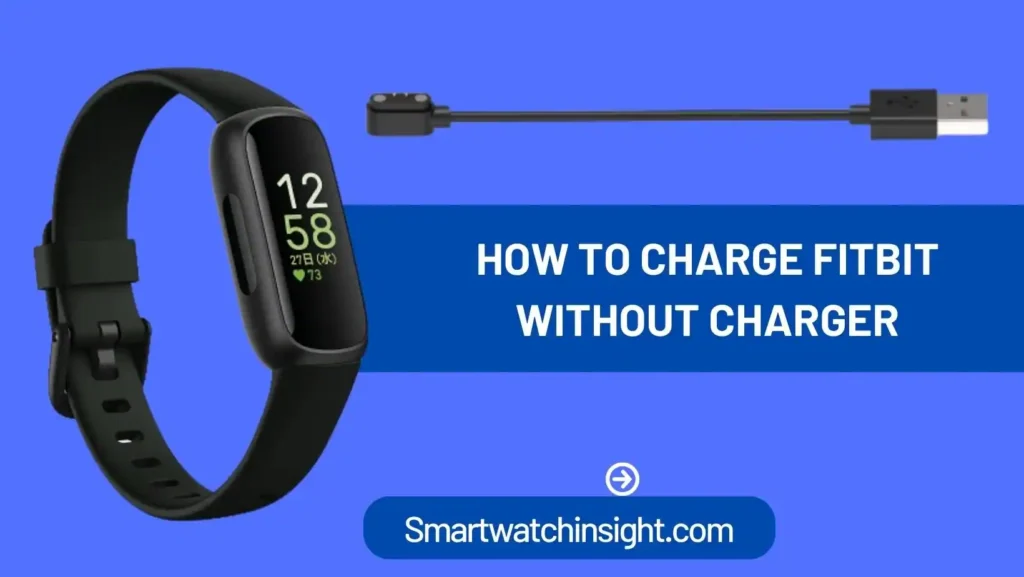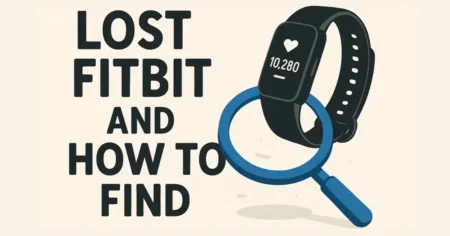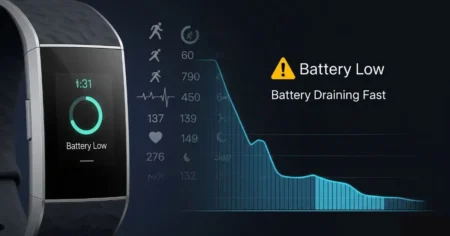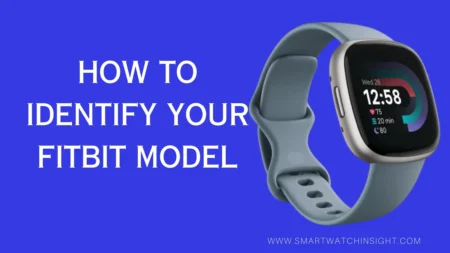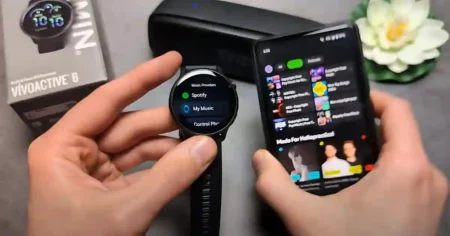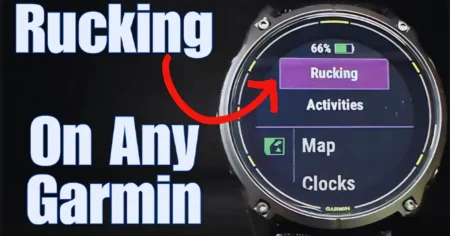Discover how to charge Fitbit without a charger. Don’t stress if you misplace or forget it! Our step-by-step guide offers a simple alternative method. Stay on top of your fitness goals with a fully-powered Fitbit. No interruptions, just progress.
Losing or forgetting your Fitbit charger is frustrating. We understand. But don’t worry, we’ve got you covered. Our solution will get you back on track in no time.
No charger? No problem! Our alternative method lets you charge your Fitbit without relying on the official charger. Simple, effective, and using items you already have at home. Say goodbye to dead Fitbits and hello to uninterrupted fitness tracking.
Ready to charge your Fitbit without a charger? Follow our easy-to-understand instructions and power up your device. Keep your fitness journey going seamlessly.
How to Charge Fitbit Without Charger?
In this section, we will discuss various methods you can use to charge your Fitbit device without a charger. Each method offers a unique approach, ensuring you can keep your Fitbit charged in different situations.
Alternative Ways to Charge Fitbit Without Charger
1. Using a USB Port
If you don’t know how to charge Fitbit without a charger with a USB Cable? It’s super easy, and all you need is a USB port. USB ports are those handy little slots you find on laptops, desktop computers, and even some power banks. So, if you don’t have your Fitbit charger with you, no worries! I’ll walk you through the steps.
First things, you’ll need a compatible USB cable. Fitbit usually includes one in the box, but if you don’t have it, you can buy a replacement cable that matches your Fitbit model. Make sure to get it from a reliable source to ensure compatibility and safe charging.
Once you have your USB cable ready, follow these simple steps:
- USB port on your computer: This is the easiest way to charge your Fitbit. Simply connect the charging cable to a USB port on your computer. The charging cable that came with your Fitbit should have a USB-A connector on one end and a micro-USB connector on the other end.
- USB wall adapter: A USB wall adapter is a small device that plugs into an electrical outlet. It has a USB port on one end that you can use to connect your Fitbit. Most USB wall adapters provide enough power to charge your Fitbit.
- Car charger: A car charger is a small device that plugs into the cigarette lighter socket in your car. It has a USB port on one end that you can use to connect your Fitbit. Most car chargers provide enough power to charge your Fitbit.
Here are some tips for charging your Fitbit with a USB port:
- Make sure that the USB port is providing enough power. You can check the power output of the USB port by looking at the label on the device. Most USB ports provide 5 volts of power.
- If you are using a USB wall adapter, make sure that it is compatible with your Fitbit. Some Fitbit models require a higher power output than others.
- Do not leave your Fitbit charging for more than 24 hours. This can damage the battery.
2. Using Power Bank
You can use a power bank with a USB port to charge your Fitbit. It’s like a portable battery that you can carry around. Just connect your Fitbit to the power bank using the charging cable, and it will start charging. This way, you don’t need to worry about finding a regular charger because the power bank gives your Fitbit the energy it needs. It’s a convenient way to keep your Fitbit charged, no matter where you are.
3. Wireless Charger
Some Fitbit models can be charged using wireless charging pads. If your Fitbit is compatible with this feature, all you need to do is place it on the charging pad. There’s no need to deal with cables or connectors. Simply find a suitable spot on the charging pad for your Fitbit, and it will start charging automatically. It’s a convenient and hassle-free way to keep your Fitbit powered up without the fuss of using regular chargers.
How to charge your Fitbit Versa without a charger?
Here are the 3 ways to charge your Fitbit Versa without a charger:
- A USB port on a computer or laptop. This is the most common way to charge your Fitbit Versa. Simply connect the charging cable that came with your device to a USB port on your computer or laptop. The Fitbit will start charging as soon as it is connected.
- Power bank. If you have a portable power bank, you can use it to charge your Fitbit Versa. Simply connect the charging cable to the power bank and then connect the other end of the cable to your Fitbit.
- Wireless charging pad. If your Fitbit Versa is compatible with wireless charging, you can use a wireless charging pad to charge it. Simply place your Fitbit on the charging pad and it will start charging.
Tips for charging your Fitbit Versa without a charger:
- Use the original charging cable that came with your device. This will ensure that your Fitbit charges properly.
- Make sure that the USB port or power bank is providing enough power for charging. If the power output is too low, your Fitbit may not charge properly.
- If you are using a power bank, make sure that it is fully charged before you start charging your Fitbit.
- Do not use a third-party charging cable or adapter that is not compatible with your Fitbit. This could damage your device.
>> You May Also Like
- How to Sync Contacts in Fire Boltt Smartwatch?
- How to Connect GOQii Smartwatch to Phone: Complete Guide
- Understanding the Benefits of Sedentary Reminders on a Smartwatch
- BLOG
How to charge Fitbit Versa 3 without Charger
The Fitbit Versa 3 is a great fitness tracker that can help you stay motivated and on track with your health goals. But like any electronic device, it needs to be charged regularly. Here’s a quick guide on how to charge your Fitbit Versa 3 with a charger
- Use a USB port on your computer or a USB wall adapter. Connect the charging cable that came with your Fitbit to the USB port. The device should start charging immediately.
- Use a power bank. If you have a portable power bank, connect your Fitbit Versa 3 to it using the charging cable. Make sure the power bank is fully charged and capable of providing enough power for the charging process.
- Use a wireless charging pad. The Fitbit Versa 3 supports wireless charging, so you can use a wireless charging pad to charge it. Just place your Fitbit on the charging pad and it will start charging.
How Can I Charge My Fitbit 4 Without a Charger?
The Fitbit 4 is a great fitness tracker that can help you stay motivated and on track with your health goals. But like any electronic device, it needs to be charged regularly. If you find yourself without your Fitbit charger, there are a few ways you can still charge your device.
Here are some methods you can use to charge your Fitbit 4 without a charger:
- Use a USB Port. This is the most common way to charge your Fitbit 4 without a charger. Simply connect the charging cable to a USB port on your computer or laptop, and your Fitbit will start charging.
- Use a power bank. A power bank is a portable battery that you can use to charge your devices on the go. Simply connect the charging cable to your power bank, and then connect the power bank to your Fitbit.
- Use a wireless charging pad. If your Fitbit 4 is compatible with wireless charging, you can use a wireless charging pad to charge it. Simply place your Fitbit on the wireless charging pad, and it will start charging.
- Use a DIY charger. If you have a USB cable and a few other materials, you can make your own charger for your Fitbit 4. There are many tutorials available online that can show you how to do this.
It is important to note that the charging time will vary depending on the method you use. For example, it will take longer to charge your Fitbit 4 using a USB port on your computer than it will be using a power bank.
How to Optimize Fitbit Battery Life?
If you want to always charge your Fitbit optimize your Fitbit Battery life by following these steps:-
1. Dimming the Screen
Adjusting the screen brightness on your Fitbit can significantly impact battery life. Discover how to dim the screen to conserve power without compromising visibility. We’ll guide you through the steps to optimize your Fitbit’s battery usage.
2. Disabling Unused Features
Fitbit devices come with a range of features that may not be essential for your daily use. By selectively disabling unused features, you can extend the battery life of your device. We’ll help you identify these features and show you how to disable them.
3. Adjusting Sync Frequency
Syncing your Fitbit device with your smartphone or computer is convenient but can drain its battery. Learn how to adjust the sync frequency to strike a balance between staying connected and conserving power. We’ll provide step-by-step instructions for adjusting sync settings.
4. Proper Fitbit Placement
The placement of your Fitbit device can affect its battery life. Discover optimal placement techniques to ensure efficient charging and prevent unnecessary power consumption. We’ll share recommendations based on the specific Fitbit model you own.
5. Power-Saving Mode
Fitbit devices often include power-saving modes that help prolong battery life. We’ll explain how to activate and utilize power-saving modes effectively. Learn about the trade-offs and considerations when using this feature.
Troubleshooting and Common Issues on Fitbit
1: Fitbit Won’t Charge at All: Encountering issues where your Fitbit device won’t charge can be frustrating. We’ll address common causes and provide troubleshooting steps to resolve this problem. From software-related issues to hardware malfunctions, we’ll guide you through potential solutions.
2: Fitbit Charges Slowly: If your Fitbit device charges slower than usual, there could be underlying factors affecting its charging speed. We’ll explore these factors and offer troubleshooting tips to improve the charging efficiency of your Fitbit device.
3: Fitbit Not Recognized by the Computer: Connecting your Fitbit to a computer is a common method for charging and syncing data. However, issues may arise where the computer fails to recognize your Fitbit device. We’ll troubleshoot this problem and provide step-by-step solutions to establish a successful connection.
4: Fitbit Overheating: Overheating can be a concern when charging electronic devices, including Fitbit. We’ll explain the causes of Fitbit overheating and suggest preventive measures to keep your device cool during charging. Safety considerations and potential risks will also be discussed.
5: Fitbit Battery Drains Quickly: If your Fitbit device’s battery drains faster than expected, there might be settings or factors impacting its power consumption. We’ll help you identify these culprits and provide strategies to extend your Fitbit’s battery life. From disabling unnecessary features to managing notifications, we’ll cover various optimization techniques.
Frequently Asked Questions (FAQs): How to Charge Fitbit Without Charger?
Can I charge my Fitbit using a smartphone charger?
Yes, as long as the charger’s specifications match the requirements of your Fitbit device, you can use a smartphone charger to charge your Fitbit.
Is it possible to charge a Fitbit with a USB port on a laptop?
Absolutely! Fitbit devices can be charged using USB ports on laptops, desktop computers, or any device with a USB output.
Can I charge my Fitbit using a power bank?
Yes, power banks can be a reliable source of power for charging Fitbit devices on the go. Ensure compatibility and choose a power bank with sufficient capacity.
How do I activate the power-saving mode on my Fitbit?
Power-saving mode activation varies depending on the Fitbit model. Refer to the user manual or the Fitbit website for specific instructions related to your device.
Why does my Fitbit battery drain quickly?
Several factors can contribute to rapid battery drain, including continuous heart rate monitoring, frequent notifications, and intensive use of features. Adjusting settings and optimizing usage can help mitigate this issue.
Why is my Fitbit overheating while charging?
Fitbit devices may overheat while charging due to environmental factors, intense usage, or hardware issues. Ensure proper ventilation and avoid charging in extreme temperatures.
Can you charge a Fitbit with a phone charger?
Yes, you can charge a Fitbit with a phone charger. Most Fitbit devices use a standard USB charging cable, so you can use any USB charger that provides a minimum of 5V/1A of power. This includes the chargers that come with most smartphones and tablets.
Can I use a Samsung charger for Fitbit?
Yes, you can use a Samsung charger for your Fitbit. Most Fitbit devices use a standard USB charging cable, so you can use any USB charger that provides a minimum of 5V/1A of power. This includes the chargers that come with most smartphones and tablets, including Samsung chargers.
The only exception is if you have a Fitbit device that uses a proprietary charging cable, such as the Fitbit Charge 5. In this case, you will need to use the charging cable that came with your Fitbit device.
What is the charging voltage for a Fitbit?
The charging voltage for a Fitbit is 5V and 0.5A. This is the standard voltage for USB chargers, so you can use any USB charger that provides a minimum of 5 volts of power.
Some Fitbit devices, such as the Fitbit Charge 5, may require a higher charging current. In this case, you will need to use a USB charger that provides at least 1 amp of current.
It is important to note that you should not use a charger that provides more than the required voltage or current. This could damage your Fitbit device.
Conclusion
In this comprehensive guide, we’ve explored various methods to charge your Fitbit device without a charger. From alternative charging options like solar-powered chargers and power banks to optimizing battery life through settings adjustments, you now know how to keep your Fitbit powered up even in challenging situations.
Remember to choose the charging method that suits your needs and always prioritize safety and compatibility. By following the tips and troubleshooting steps provided, you can ensure a seamless charging experience for your Fitbit device.

